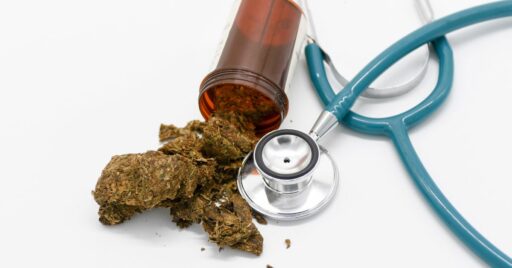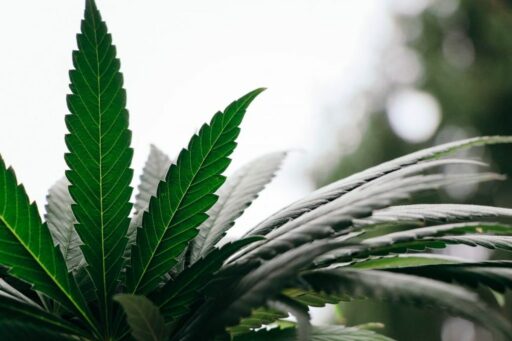The legalization of marijuana in Oklahoma has been a significant policy change with far-reaching implications. This article delves into the various aspects of this shift, from regulatory changes and market dynamics to legal challenges, public health concerns, and the broader social impact. By examining these areas, we aim to provide a comprehensive overview of the impact that marijuana legalization has had on the state of Oklahoma.
Key Takeaways
- Increased regulation and scrutiny of Oklahoma’s medical marijuana industry have been met with a mixed response, with the majority of the industry acknowledging the necessity of regulation.
- The number of cannabis licenses in Oklahoma has decreased by 27% since last year, indicating a significant shift in the market landscape.
- Legal challenges continue to shape the marijuana landscape in Oklahoma, with recent Supreme Court decisions rejecting challenges to marijuana legalization initiatives.
- Public health concerns, such as allegations of inflated THC potency in medical cannabis, are prompting regulatory authorities to consider stricter controls.
- The upcoming Farm Bill and banking reforms could dramatically alter the economic and social equity landscape for cannabis businesses in Oklahoma.
Regulatory Changes and Their Effects on the Oklahoma Cannabis Industry

Assessing the Impact of Increased Regulation and Scrutiny
The recent legislative session in Oklahoma has ushered in a new era of increased regulation and scrutiny for the medical marijuana industry. The majority of the industry welcomes regulation, recognizing that compliance is essential for legal operations. The introduction of new laws aimed at tightening oversight has been met with a general consensus that these changes are a net positive, enhancing compliance across the state.
The impact of these regulations can be seen in various aspects of the industry:
- More compliance inspectors are now active in the field.
- There is a heightened focus on employee credentialing and licensing requirements.
- The implementation of a seed-to-sale tracking system is underway.
The goal of these regulatory changes is not only to ensure legal compliance but also to evaluate the wider public health consequences of these changing laws.
While the industry adapts to these changes, it is crucial to monitor the effects continuously. The regulations are designed to bring about a safer, more accountable market, but the true measure of their success will lie in their ability to balance industry growth with public health and safety.
The Response of Medical Marijuana Growers to Fire-Inspection Backlogs
In the wake of regulatory changes aimed at tightening scrutiny over the medical marijuana industry in Oklahoma, growers have been facing significant challenges. One of the most pressing issues has been the backlog of fire inspections, a critical step in maintaining compliance and ensuring safety. Medical marijuana growers, in response to these backlogs, have taken legal action to address the delays which they argue put their operations at risk of falling into non-compliance through no fault of their own.
The backlog has not only caused frustration but also prompted a broader discussion about the capacity of regulatory bodies to keep pace with the industry’s needs. Growers are advocating for a more streamlined process that can handle the volume of inspections required without compromising on safety standards.
The situation underscores the growing pains of an industry that is still finding its footing within a regulatory framework that is evolving to meet the demands of public safety and market dynamics.
While the legal route is one avenue being pursued, growers are also exploring other solutions to mitigate the impact of the backlog. These include hiring private inspectors, seeking extensions on compliance deadlines, and collaborating with other industry stakeholders to lobby for more resources for regulatory agencies.
Tracking and Trace System Investments: Are They Paying Off?
The implementation of track-and-trace systems in Oklahoma’s cannabis industry has been met with mixed reactions. Operators express skepticism regarding the tangible benefits of such investments, particularly when considering the dominance of companies like Metrc with extensive state contracts. Despite the significant costs associated with these systems, the promised efficiency gains and oversight improvements are yet to be universally acknowledged by industry participants.
The track-and-trace systems are designed to ensure accountability and transparency in the cannabis supply chain. However, the effectiveness of these systems is still under scrutiny, with some operators seeing a glimmer of hope for future improvements.
The industry’s sentiment is cautiously optimistic, with projections indicating a potential upswing in the coming years. This optimism is grounded in the belief that current challenges will pave the way for more streamlined operations and positive financial outcomes in the long term.
Market Dynamics and Economic Implications of Legalization

Analyzing the Decline in Cannabis License Numbers
The Oklahoma cannabis industry has witnessed a significant shift in market dynamics, particularly with the decline in cannabis license numbers. Recent reports indicate a 27% decrease in license numbers since the previous year, signaling a contraction in the industry. This trend is not isolated to Oklahoma; similar patterns are observed in other states where the maturation of the market leads to consolidation.
Factors contributing to this decline include market saturation, regulatory challenges, and financial hurdles. For instance, the Vangst report highlights an oversupply of cannabis and reduced marijuana-related tourism as key issues. The expansion of adult-use sales in other states has also impacted Oklahoma’s market by diminishing its unique position as a cannabis-friendly state.
The reduction in license numbers may have a ripple effect on the state’s economy, affecting job creation, tax revenue, and investment opportunities.
While the decline could be seen as a market correction, it raises concerns about the sustainability of the industry and the potential for monopolization by larger players. It is crucial for policymakers to monitor these changes and consider measures to support small and medium-sized enterprises within the cannabis sector.
The Role of Banking Reform in Minimizing the Illicit Marijuana Market
The integration of the marijuana industry into the banking system is seen as a pivotal step in curbing the illicit market. The SAFER Banking Act may soon change the landscape of marijuana commerce, by resolving the tension between federal and state law with respect to banking, even though marijuana will remain federally illegal.
The current lack of banking services for marijuana businesses has led to a reliance on cash transactions, which in turn has fueled the black market. By providing a legal framework for these businesses to access banking services, the Act aims to reduce the cash-based nature of the industry and diminish the illicit market.
The Oklahoma Bureau of Narcotics estimates that 2,000 illegal grow farms have connections to organized crime. Legalization, while intended to curb illegal activity, has inadvertently provided cover for illicit actors to expand their operations.
The anticipated banking reforms could also alleviate the burden on law enforcement, which currently expends significant resources on combating illegal marijuana operations. This shift could allow for a reallocation of efforts towards more serious crimes, enhancing overall community safety.
Hemp-Derived THC Producers and the Impending Farm Bill
The upcoming revision of the U.S. Farm Bill has hemp-derived THC producers on edge, as it may introduce new regulations that could significantly impact their operations. With the potential for lawmakers to address intoxicating hemp-derived cannabinoids, the industry faces uncertainty.
- The current legal landscape allows for the production of hemp-derived THC under specific THC concentration limits.
- Changes to the Farm Bill could redefine these limits or impose stricter controls on production and distribution.
- Producers are concerned about the possibility of increased costs and barriers to entry that could stifle innovation and growth.
The Farm Bill’s implications for the hemp-derived THC market are profound, and stakeholders are closely monitoring legislative developments. The industry’s adaptability will be tested as it navigates potential regulatory shifts.
The anticipation of the Farm Bill has led to a cautious approach among producers, with many seeking to diversify their product lines or explore new markets in preparation for changes. The bill’s final form will be instrumental in shaping the future of hemp-derived THC products in Oklahoma and beyond.
Legal Challenges and Law Enforcement in Post-Legalization Oklahoma

Oklahoma Supreme Court Decisions on Marijuana Legalization Initiatives
The Oklahoma Supreme Court has played a pivotal role in shaping the legal landscape of marijuana legalization in the state. Recent rulings have provided clarity and direction for both lawmakers and activists. In a series of decisions, the court has rejected challenges to marijuana legalization initiatives, indicating a trend towards upholding the legislative process.
The court’s decisions have underscored the importance of adhering to statutory and constitutional guidelines, reinforcing the legitimacy of the state’s ballot measures.
The court also affirmed the legislature’s authority in matters of tribal compacts, which may have indirect implications for the cannabis industry. This assertion of legislative power over gubernatorial vetoes could influence future cannabis-related legislation.
Here is a summary of key decisions:
- Rejection of two legal challenges to a marijuana legalization initiative
- Unanimous ruling on the legislature’s authority to override tribal compact vetoes
- Denial of a petition for rehearing on the constitutionality of State Question 832 (SQ 832)
The State’s Crackdown on Illegal Marijuana Operations
In the wake of a burgeoning cannabis industry, Oklahoma has seen a significant rise in illegal marijuana operations. The state’s response has been a concerted crackdown, targeting these illicit activities with increased vigor. Law enforcement agencies have been actively pursuing and dismantling operations that are not compliant with state regulations.
The Oklahoma Bureau of Narcotics estimates that there are approximately 2,000 illegal grow farms with connections to Chinese organized crime. This has led to a complex scenario where legalization inadvertently provided a smokescreen for criminal elements to expand under the guise of legitimacy. The impact on law enforcement resources has been substantial, with efforts to counter the illegal market taking precedence over other serious crimes.
The challenge is multifaceted, involving not just the suppression of illegal grows but also addressing the diversion of cannabis across state lines and the involvement of international drug cartels.
Despite the crackdown, the black market for marijuana has not diminished. Diversion to states where marijuana remains illegal continues to be a significant issue. Here is a snapshot of the situation as reported by various sources:
- Organized crime’s involvement in illegal marijuana grows
- The diversion of marijuana across state boundaries
- Law enforcement’s increased caseload due to illicit market activities
The state’s efforts are ongoing, with recent busts indicating the scale of the problem. For instance, a law enforcement task force recently seized over 72,000 pounds of illicit cannabis, highlighting the magnitude of illegal operations within Oklahoma.
Legal Outcomes for Marijuana Growers in Criminal Cases
In the evolving landscape of Oklahoma’s cannabis legalization, the legal outcomes for marijuana growers facing criminal charges have been varied. An Oklahoma City marijuana grower charged with murder avoided jail time, receiving 10 years of probation instead. This case highlights the complexities and nuances in the legal system post-legalization.
The Oklahoma Bureau of Narcotics estimates that 2,000 illegal grow farms have connections to Chinese organized crime. The legalization has inadvertently provided a cover for illicit operations, complicating law enforcement efforts.
While some growers have faced severe penalties, others have seen charges reduced or dismissed. The state’s focus on regulating intoxicating hemp-derived products like delta-8 THC suggests a shift towards tighter control over the industry. However, the impact of such regulatory changes on legal outcomes remains to be seen.
- December 27, 2023: Oklahoma City grower on probation for murder case
- December 7, 2023: OMMA seeks authority over delta-8 THC
- December 6, 2023: Opinion on banking reform’s impact on illicit market
Public Health and Safety Concerns Amidst Cannabis Legalization

Allegations of Inflated THC Potency in Medical Cannabis
Recent allegations suggest that the THC potency in Oklahoma’s medical cannabis may be significantly overstated. Concerns have been raised that such discrepancies could lead to health risks, including overdoses and mental health crises. The potency of marijuana has seen a dramatic increase over the decades, with today’s products ranging from 18% to 35% THC, and some extracts boasting levels as high as 99%.
The issue of potency inflation is not isolated to Oklahoma. A federal study found that over 90% of smokable hemp samples contained illegal amounts of THC, indicating a widespread challenge in product consistency and regulation.
The implications of these allegations are profound, affecting patient safety, industry credibility, and regulatory oversight. Efforts to address these concerns include:
- Stricter lab testing protocols
- Enhanced regulatory frameworks
- Increased transparency from growers and producers
As the industry continues to evolve, the accuracy of THC labeling remains a critical point of contention that demands immediate and concerted attention.
The OMMA’s Push to Regulate Intoxicating Hemp-Derived Products
In Oklahoma, the push to regulate intoxicating hemp-derived products has gained momentum. Legislation is being considered to address the sale of these products in various retail outlets, including vape shops, gas stations, and convenience stores. The Oklahoma Medical Marijuana Authority (OMMA) is at the forefront of this initiative, aiming to establish clear guidelines for the industry.
The proliferation of hemp-derived products with psychoactive effects has raised concerns among regulators and public health officials. These products, often found in the form of edibles, tinctures, and vape cartridges, can contain varying levels of THC, the principal intoxicant in cannabis. The lack of standardization and oversight has led to a market where the potency and purity of products are unpredictable.
The OMMA’s efforts are focused on creating a safer environment for consumers by ensuring that products meet stringent quality and safety standards.
To illustrate the current landscape, here is a snapshot of the market dynamics:
- Number of hemp-derived product retailers: Increasing
- Reported cases of products with illegal THC levels: Rising
- Consumer awareness of product contents: Varies widely
- OMMA’s regulatory actions: In development
The goal is to align the state’s regulations with the impending changes at the federal level, particularly with the U.S. Farm Bill’s potential revisions to hemp-related policies. This alignment is crucial to prevent a disjointed regulatory framework that could hinder the industry’s growth and compromise public safety.
Evaluating the Effectiveness of Marijuana Enforcement Strategies
In the wake of marijuana legalization, Oklahoma has faced the challenge of adapting its enforcement strategies to ensure public health and safety. The strategic plan of Oklahoma.gov emphasizes the promotion of public health and safety through regulation and enforcement of responsible medical cannabis practices. However, the effectiveness of these strategies is under scrutiny.
Law enforcement resources have been redirected to counter the illegal marijuana market, raising questions about the balance between public safety and the costs of enforcement. The debate continues on whether the tax revenue from legal cannabis sales justifies the added costs to law enforcement, especially when considering the potential impact on community safety.
The persistence of racial disparities in marijuana-related arrests is a concern that has not been fully addressed post-legalization. Studies suggest that despite a decline in overall arrests, certain misdemeanors related to public consumption may still exhibit racially biased policing.
Further research is needed to understand the long-term implications of cannabis law reforms on social justice and health equity. This includes examining the direct effects on cannabis arrest rates and the broader relationship between drug and immigration enforcement.
Social Equity and Legal Cannabis: Opportunities and Challenges

Exploring Social Equity Issues in the Wake of Legalization
The legalization of marijuana in Oklahoma has opened up a complex dialogue around social equity. The shift from illicit to legal cannabis markets has profound implications for social justice, particularly in communities historically targeted by enforcement activities. The potential impacts on immigration justice and immigrant health disparities are significant, as minor cannabis infractions can lead to severe repercussions for non-citizens under federal law.
- Public support for cannabis reform is driven by the recognition of criminalization’s harms.
- Legalization may reduce certain types of immigration enforcement activities.
- Racial disparities persist post-legalization, necessitating ongoing scrutiny.
The transition to a legal cannabis market presents both opportunities and challenges in achieving social equity. It is crucial to monitor and address the persistent racial disparities and the unique vulnerabilities faced by the non-citizen population.
The Debate Over Cannabis Legalization and Social Equity
The debate surrounding cannabis legalization and social equity is multifaceted, touching on issues from health disparities to immigration justice. The crux of the discussion lies in whether the shift from illicit to legal cannabis markets can be leveraged to address long-standing inequities.
- Cannabis legalization presents an opportunity to rectify historical injustices faced by marginalized communities.
- The impact on immigration justice is significant, as federal illegality of cannabis can lead to severe repercussions for non-citizens.
- Disproportionate rates of cannabis-related arrests among Black and Latinx populations highlight the need for equity-focused legalization policies.
The transition to legal cannabis markets offers a unique moment to implement social justice measures. However, the complexity of intertwining federal and state laws poses challenges to achieving true social equity.
Pennsylvania’s recent discussions on marijuana justice and equity, following the introduction of a new legalization bill, exemplify the ongoing efforts to ensure that legalization policies are inclusive and reparative. The debate continues to evolve, with stakeholders from various sectors contributing to a comprehensive understanding of the social equity implications of cannabis legalization.
Assessing the Long-Term Social Impacts of Legal Cannabis
The long-term social impacts of legal cannabis in Oklahoma are multifaceted, touching on public health, safety, and social equity. The societal shift towards acceptance of cannabis is evident, with a significant portion of Americans supporting its legalization for various uses. This change in public opinion is crucial for understanding the broader social dynamics at play.
- Public health outcomes are closely monitored to gauge the effects of legalization on consumption patterns and associated health issues.
- Safety concerns focus on the regulation of cannabis products and the prevention of illicit market activities.
- Social equity challenges include ensuring that the benefits of legalization are distributed fairly across different communities.
The complexity of these impacts requires ongoing research and policy adjustments to ensure that the benefits of legalization are maximized while mitigating potential negative consequences.
The debate on legalization also intersects with immigration justice, as federal illegality of cannabis can lead to severe repercussions for non-citizens. This highlights the need for a harmonized approach between state and federal laws to address such disparities.
Conclusion
As Oklahoma navigates the evolving landscape of marijuana legalization, the state has witnessed a dynamic interplay of regulatory challenges, market adjustments, and legal developments. The recent legislative efforts to tighten regulations on the medical marijuana industry reflect a growing commitment to oversight and safety, while the reduction in cannabis license numbers suggests a market seeking equilibrium. Despite allegations of inflated THC potency and the complexities of implementing track-and-trace systems, the majority of the industry appears to embrace the need for regulation. Legal actions, such as the Supreme Court’s dismissal of challenges to marijuana legalization initiatives, underscore the legal system’s role in shaping the industry’s future. Moreover, the crackdown on illegal operations and the push for banking reform highlight the ongoing battle against the illicit market. As Oklahoma continues to refine its approach to cannabis, the outcomes of these developments will be critical in determining the long-term impact of legalization on the state’s social, economic, and legal fabric.
Frequently Asked Questions
What regulatory changes have affected the Oklahoma cannabis industry?
During the last legislative session, Oklahoma lawmakers enacted several bills to increase regulation and scrutiny, particularly of the medical marijuana industry, which was previously criticized for being too lax. These changes aim to enhance oversight and control over the industry.
How has the Oklahoma cannabis industry responded to fire-inspection backlogs?
Medical marijuana growers in Oklahoma have sued over fire-inspection backlogs, arguing that delays are hindering their business operations and growth. This indicates a challenging adjustment to the new regulatory environment.
Are Oklahoma’s cannabis license numbers declining?
Yes, there has been a 27% decrease in cannabis license numbers in Oklahoma since last year. This could be attributed to increased regulation and market consolidation.
What is being done to minimize the illicit marijuana market in Oklahoma?
Banking reform is considered a significant opportunity to curb the illicit market by integrating the marijuana industry into the banking system. Additionally, law enforcement task forces have been actively seizing illicit cannabis to combat illegal operations.
What public health concerns have arisen with cannabis legalization in Oklahoma?
There are allegations of inflated THC potency in medical cannabis. The Oklahoma Medical Marijuana Authority (OMMA) is also seeking to regulate intoxicating hemp-derived products like delta-8 THC to ensure public safety.
How is social equity being addressed in Oklahoma’s legal cannabis industry?
Social equity issues are a significant concern post-legalization, with debates and studies focusing on the long-term social impacts and opportunities for equitable participation in the cannabis industry.





